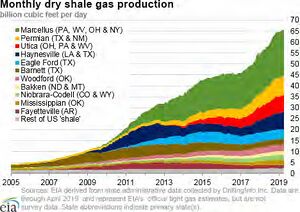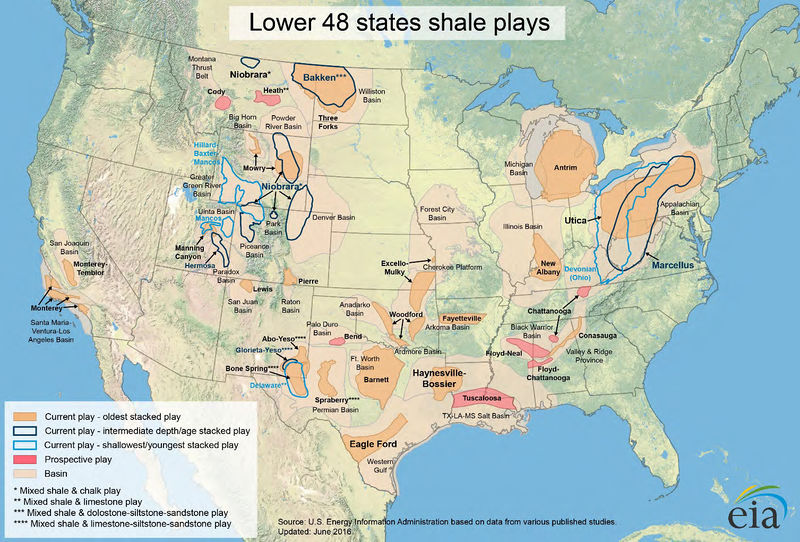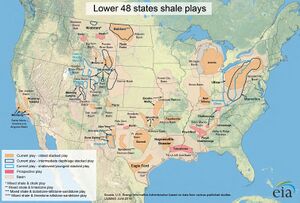EMD Tight Oil & Gas Committee 2018-19 Annual Report
Committee Members Chair - Ursula Hammes, Hammes Energy & Consultants, Austin, TX Vice-Chair - Brian Cardott, Oklahoma Geological Survey, Norman, OK Advisory Group Member - Justin Birdwell, U.S. Geological Survey, Denver, CO Advisory Group Member - Kent Bowker, Bowker Petroleum, The Woodlands, TX Advisory Group Member - Lyn Canter, Sedimentary Solutions, Denver, CO Advisory Group Member - Brian Cardott, Oklahoma Geological Survey, Norman, OK Advisory Group Member - Ken Chew, IHS (retired), Perthsire, Scotland Advisory Group Member - Thomas Chidsey, Utah Geological Survey, Salt Lake City, UT Advisory Group Member - Catherine Enomoto, U.S. Geological Survey, Reston, VA Advisory Group Member - Ursula Hammes, Hammes Energy & Consultants, Austin, TX Advisory Group Member - Shu Jiang, University of Utah, Salt Lake City, UT Advisory Group Member - Peng Li, Arkansas Geological Survey, Little Rock, AK Advisory Group Member - Jock McCracken, Egret Consulting, Calgary, AB Advisory Group Member - Rich Nyahay, New York Museum, Albany, NY Advisory Group Member - Stephen Sonnenberg, Colorado School of Mines, Golden, CO
Executive Summary
Shale gas and liquids have been the focus of extensive drilling for the past 14+ years owing to improved engineering, recovery and abundance of reservoir. Although there is international interest in exploiting hydrocarbons from these unconventional reservoirs, with active exploration projects on most continents, much of the successful exploitation from shales continues to be in North America (Figure 1), particularly in the United States but increasingly so in Canada and South America. While shale-gas production has been declining from 2014-16 some areas saw a revival (e.g., Haynesville Shale) due to LNG facilities being built along the East Coast of the USA. Since the downturn in 2016, shale-gas production has increased to 66Bcf/day through early 2019 (Fig. 2; EIA, 2019) mainly fueled due to increased production in the Marcellus and Permian Basin. New plays in shale liquids contributed to a reversal in oil production after a general decline over the last 20 years (e.g., Permian Basin, Eagle Ford). Shale-oil production remained strong at approximately 7.4 million barrels per day due to improvements in drilling techniques, however daily production is forecasted to increase only in the Permian Basin in 2019 (EIA May, 2019).
Overall, Europe remains relatively unexplored as compared to North America and many parts of Asia remain relatively unexplored for unconventional shale gas and oil, but interest in these plays is certainly high. South America’s potential as unconventional shale gas and oil province is currently assessed in Argentina, but exploration and exploitation of these reservoirs and infrastructure are still in the development stages.

The following report provides the reader with information about many shale systems in North America that are actively being exploited for contained hydrocarbons as well as an overview of activities in China and Europe.
Introduction
It is a pleasure to submit the Annual Report from the EMD Shale Gas and Liquids Committee looking back to the years 2017/2018. This report contains information about specific shales with recent activities in the U.S., Canada, Europe, and China. Given the intense interest in shales as “unconventional” hydrocarbon reservoirs, this report contains information available at the time of its compilation, and the reader is advised to use links provided herein to remain as up-to-date as possible.
This report is organized so that the reader can examine contributions from members of the EMD Shale Gas and Liquids Committee on various shales in the United States (presented in alphabetical order by shale name or region; Figure 1, Canada, China, and Europe. Additional sections of the report include valuable links, additional sources of information, and the Gas Shales and Shale Oil Calendar for 2019/2020.
The following shale system sub-reports are listed and linked respectively below in alphabetical order:
- Baken Shale 2017-18
- Barnett Shale 2017-18
- Eagle Ford and Tuscaloosa Shales 2017-18
- Fayetteville Shale 2017-18
- Haynesville/Bosier Shale 2017-18
- Marcellus Shale 2017-18
- Mowry Shale, Wyoming 2017-18
- Permian Basin, West Texas 2017-18
- Utah Shales 2017-18
- Utica Shale 2017-18
- Oklahoma Shale Gas/Tight Oil Plays, USA 2017-18
- Canadian Shales 2017-18
- Chinese Shales 2017-18
- European Shales 2017-18
See also[edit]
- Energy Minerals Division
- EMD Bitumen/Heavy Oil Committee
- EMD Coal Committee
- EMD Coalbed Methane Committee
- EMD Critical Minerals Committee
- EMD Energy Economics & Technology Committee
- EMD Gas Hydrates Committee
- EMD Geothermal Energy Committee
- EMD Uranium Committee
- EMD Tight Oil & Gas Committee
- EMD Tight Oil & Gas Committee Annual Reports
- EMD Tight Oil & Gas Committee 2019-20 Annual Report
- EMD Tight Oil & Gas Committee 2020-21 Annual Report

